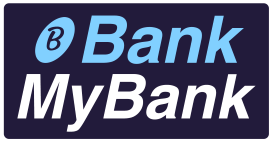In recent years, the Indian banking sector has undergone a remarkable transformation with the advent of digital technology. Traditional banking practices are rapidly giving way to more innovative and customer-centric solutions, and at the forefront of this evolution are the “Digital Bazaars.” These virtual marketplaces have revolutionized the way Indians bank, bringing convenience, accessibility, and efficiency to the fingertips of millions. In this blog, we will explore the rise of digital bazaars in the Indian banking sector, their impact on the industry, and the benefits they offer to consumers.
What are Digital Bazaars?
Digital Bazaars in the context of banking refer to online platforms that bring together a wide array of financial products and services under one virtual roof. These platforms act as intermediaries between banks, financial institutions, and customers, enabling seamless transactions and interactions in a user-friendly manner. Essentially, they offer a one-stop shop for all banking needs.
Read More: Your credit card was Lost? Following Are Your Next Steps
Digital Bazaars in India
An online marketplace connects consumers and sellers of goods and services and offers the infrastructure necessary to make the transaction easier. In India, marketplaces have proliferated across all business-to-consumer (B2C) and business-to-business (B2B) e-commerce models, as well as in edtech, online food delivery, automotive platforms, fintech, shipping and logistics, classifieds, healthcare services, and professional services.
With sizable offline marketplaces, over US$ 2 trillion in consumer spending, rising disposable incomes brought on by the growth of the middle class, and an increasingly digitalized base of online consumers and small enterprises.
India is one of the most interesting countries in the world for marketplaces to prosper since it has a sizable addressable market, a growing online buyer base, and increasingly digital MSMEs.
Convenience and Accessibility:
One of the primary drivers of the success of digital bazaars is the unparalleled convenience they provide to customers. Gone are the days when one had to physically visit multiple banks to compare various financial products. With just a few clicks, customers can now explore a plethora of options, from savings accounts, loans, and credit cards to insurance and investment products. Moreover, these platforms are accessible 24/7, eliminating the constraints of traditional banking hours.
Personalization and Customization:
Digital bazaars leverage cutting-edge technology such as artificial intelligence and machine learning to understand customers’ preferences and financial needs. By analyzing user data and behavior, they can offer personalized product recommendations and financial advice. This level of customization ensures that customers get the best-suited products and services for their individual requirements.
Enhanced Competition:
The rise of digital bazaars has intensified competition in the Indian banking sector. With multiple banks and financial institutions vying for customer attention on a single platform, they are compelled to offer more competitive interest rates, fees, and incentives. This benefits consumers who can now enjoy better deals and enhanced value for their money.
Financial Inclusion:
Digital bazaars have played a crucial role in furthering financial inclusion in India. By providing access to a wide range of financial services to users across different income levels and geographical locations, these platforms empower previously underserved communities. Additionally, simplified application processes and minimal documentation requirements have made it easier for individuals to avail themselves of banking services, especially those in remote areas.
Emphasis on Security:
With the rise of digital transactions, security concerns have become paramount. Recognizing this, digital bazaars have implemented robust security measures to safeguard customer data and financial information. Encryption, multi-factor authentication, and secure payment gateways are some of the tools employed to ensure a safe banking experience.
Read More: What is UJALA Yojana?
Conclusion:
One of the emerging markets with the most energy and rapid growth is India. Due to fragmented supply, demand for disintermediation, and government initiatives, upstream B2B represents an opportunity worth US$ 1 trillion with a substantial margin potential. The low penetration of financial and insurance products, consumer digitalization, and the availability of user-friendly digital platforms have all contributed to the growth of the fintech business. A growth in tech-based shipping and logistics platforms is the result of a US$ 200 billion addressable market and supply chain inefficiencies. Additionally, the upcoming generation of scale markets may fall into one of two major categories: global cross-border marketplaces that take into account India’s export potential, or “Bharat-first” marketplaces, which are driven by participation from tier-3+ cities.
The rise of digital bazaars in the Indian banking sector has marked a significant shift in how people manage their finances. These online marketplaces have brought about unprecedented convenience, personalized offerings, and improved access to financial services for a vast population. As technology continues to evolve, we can expect these digital bazaars to play an even more prominent role in shaping the future of banking in India, making it more inclusive, efficient, and customer-centric than ever before.





